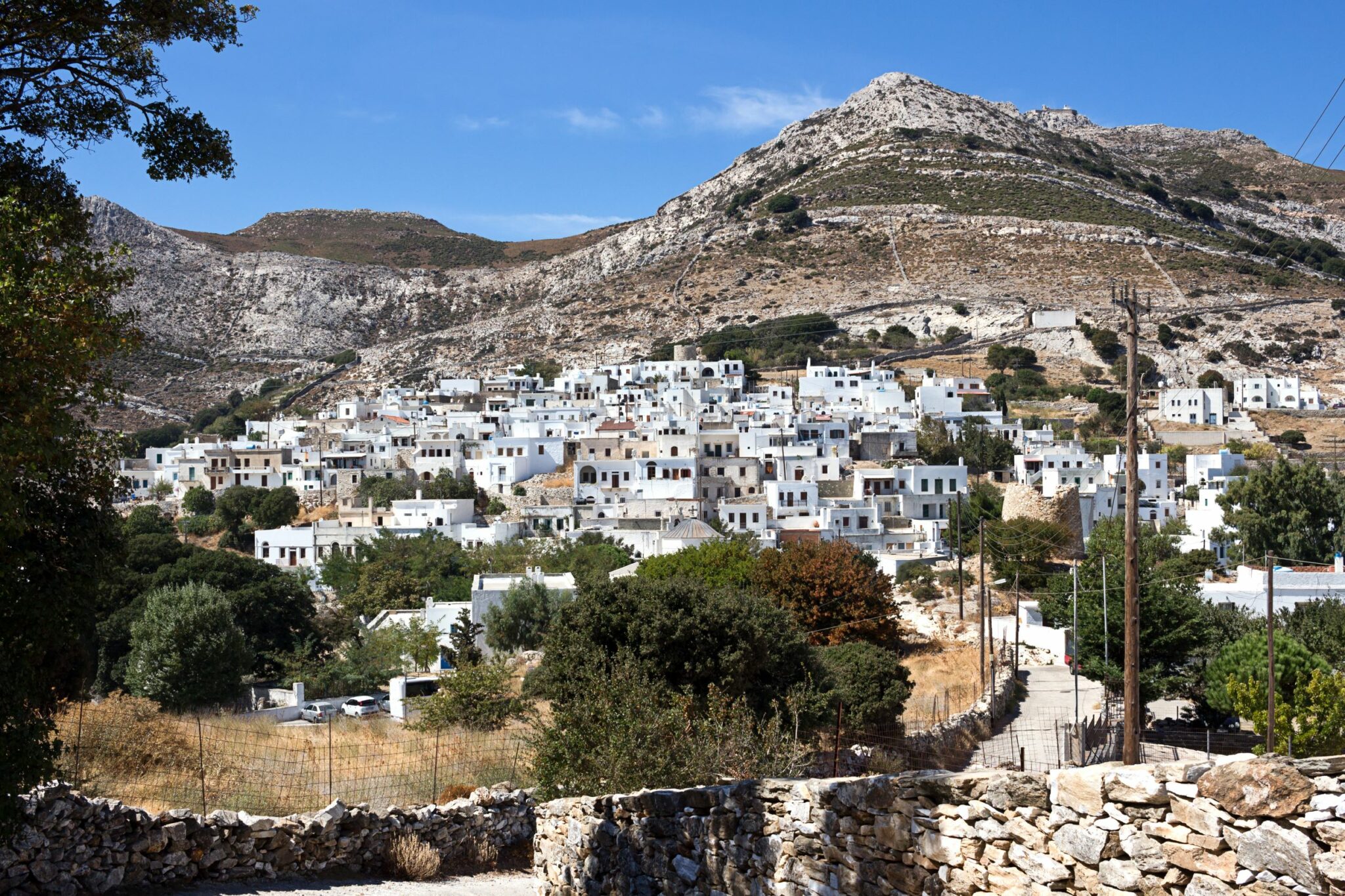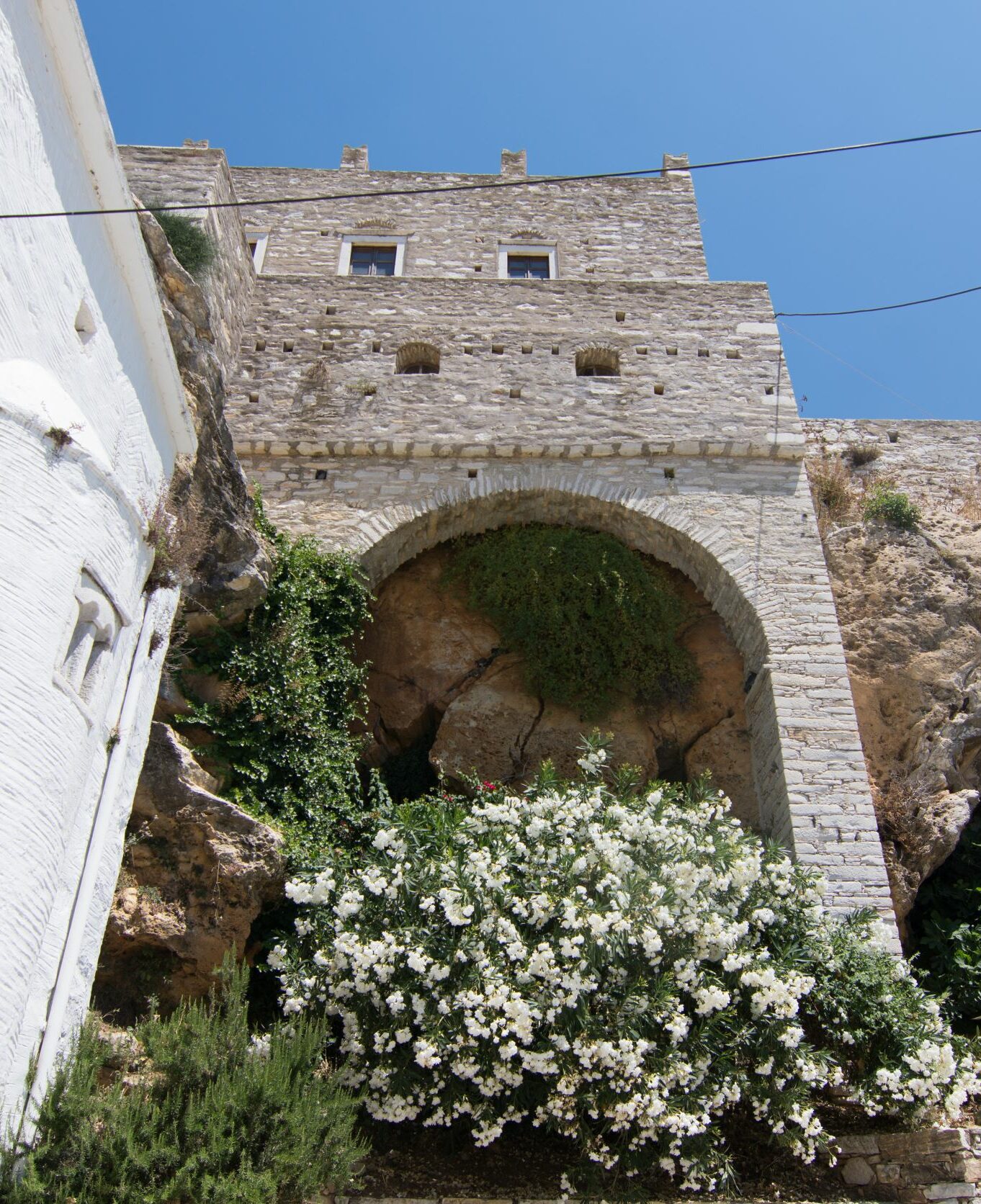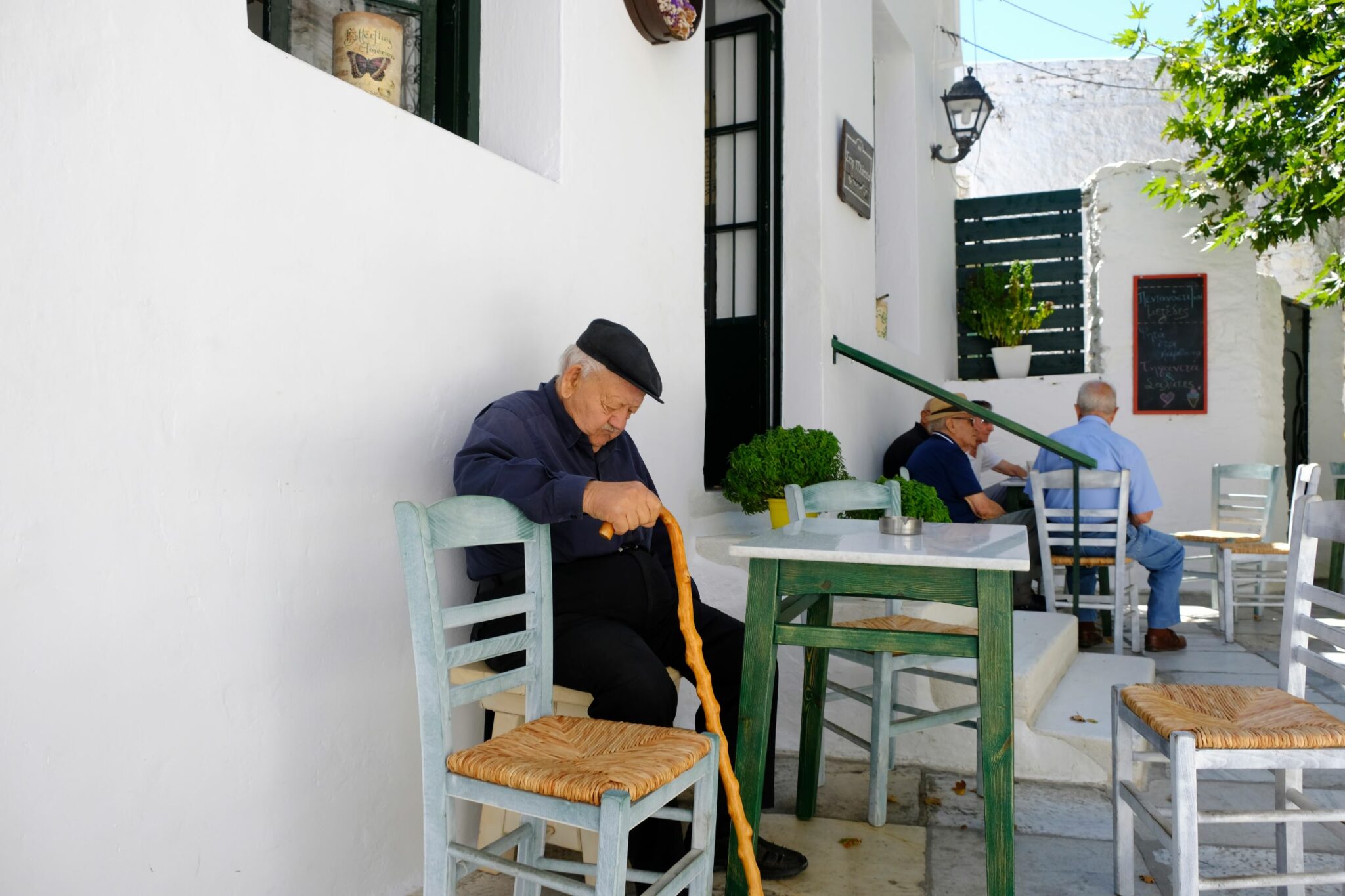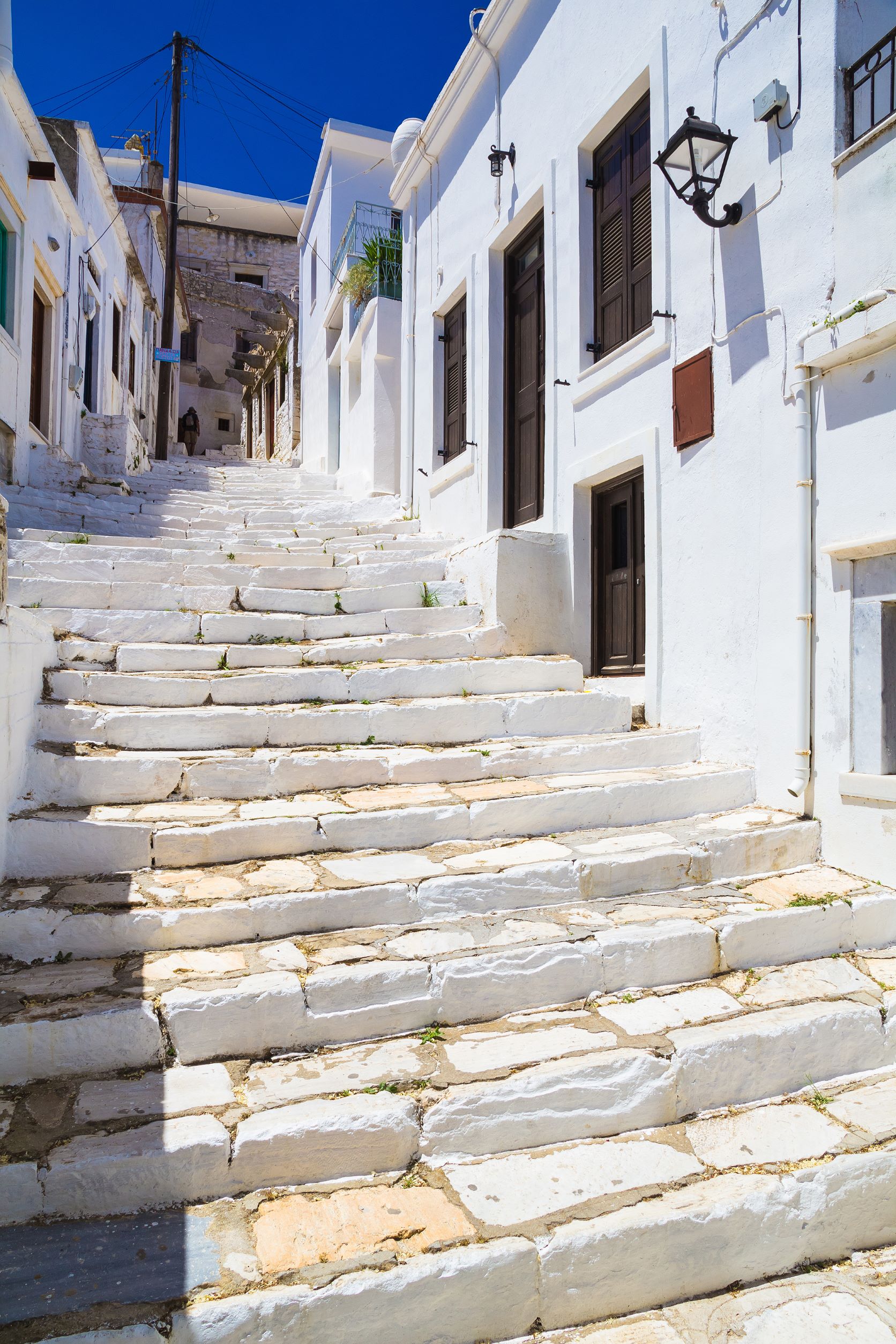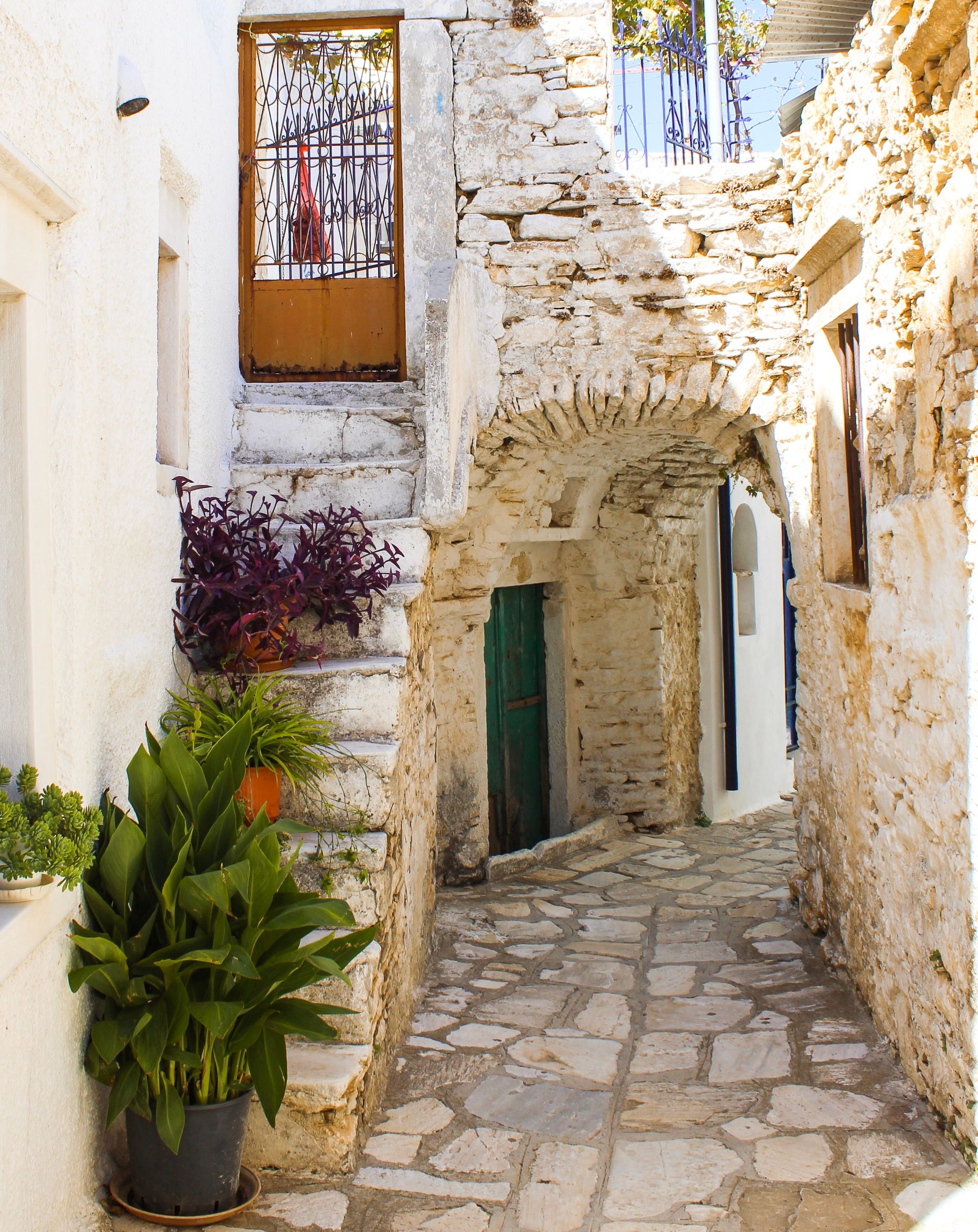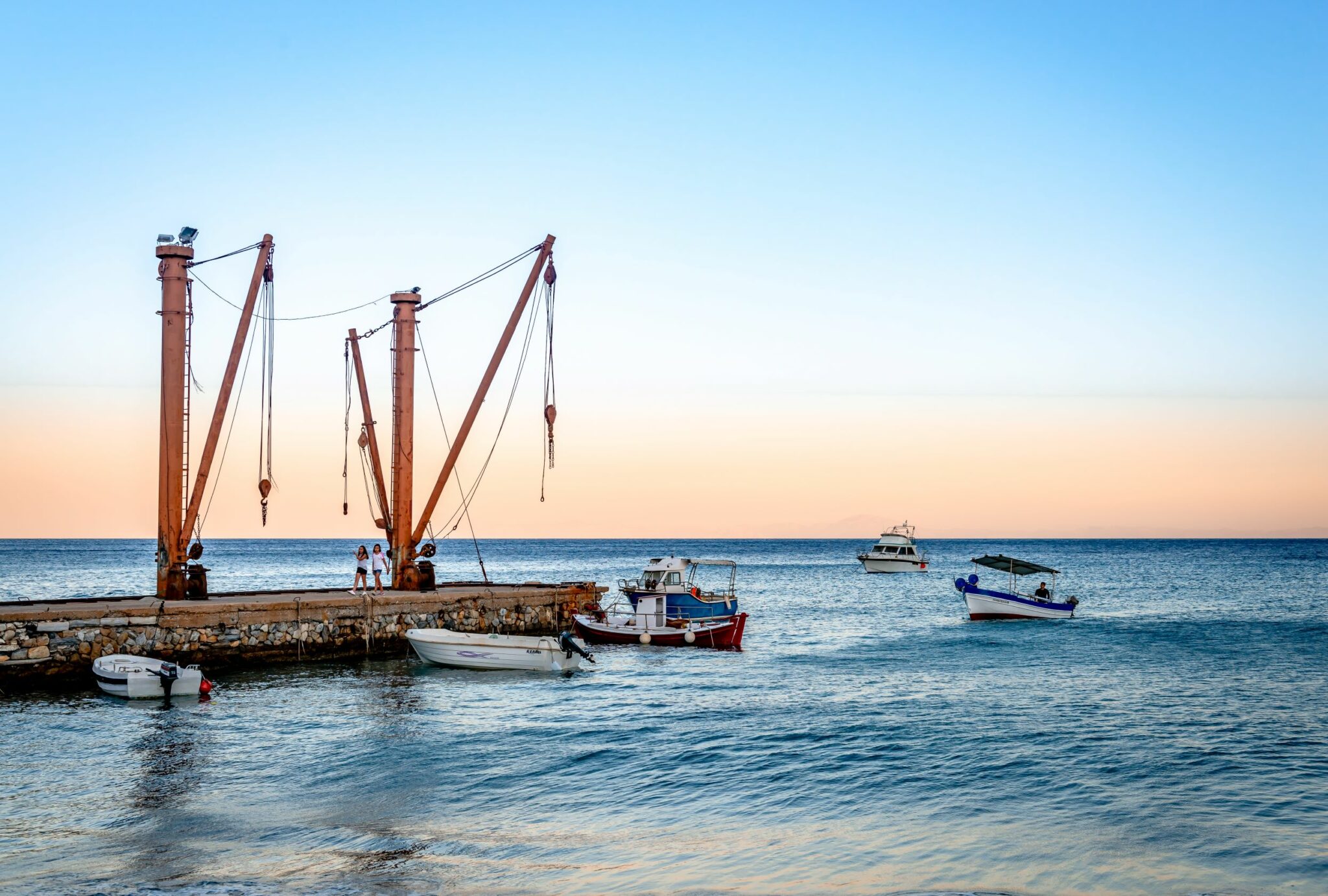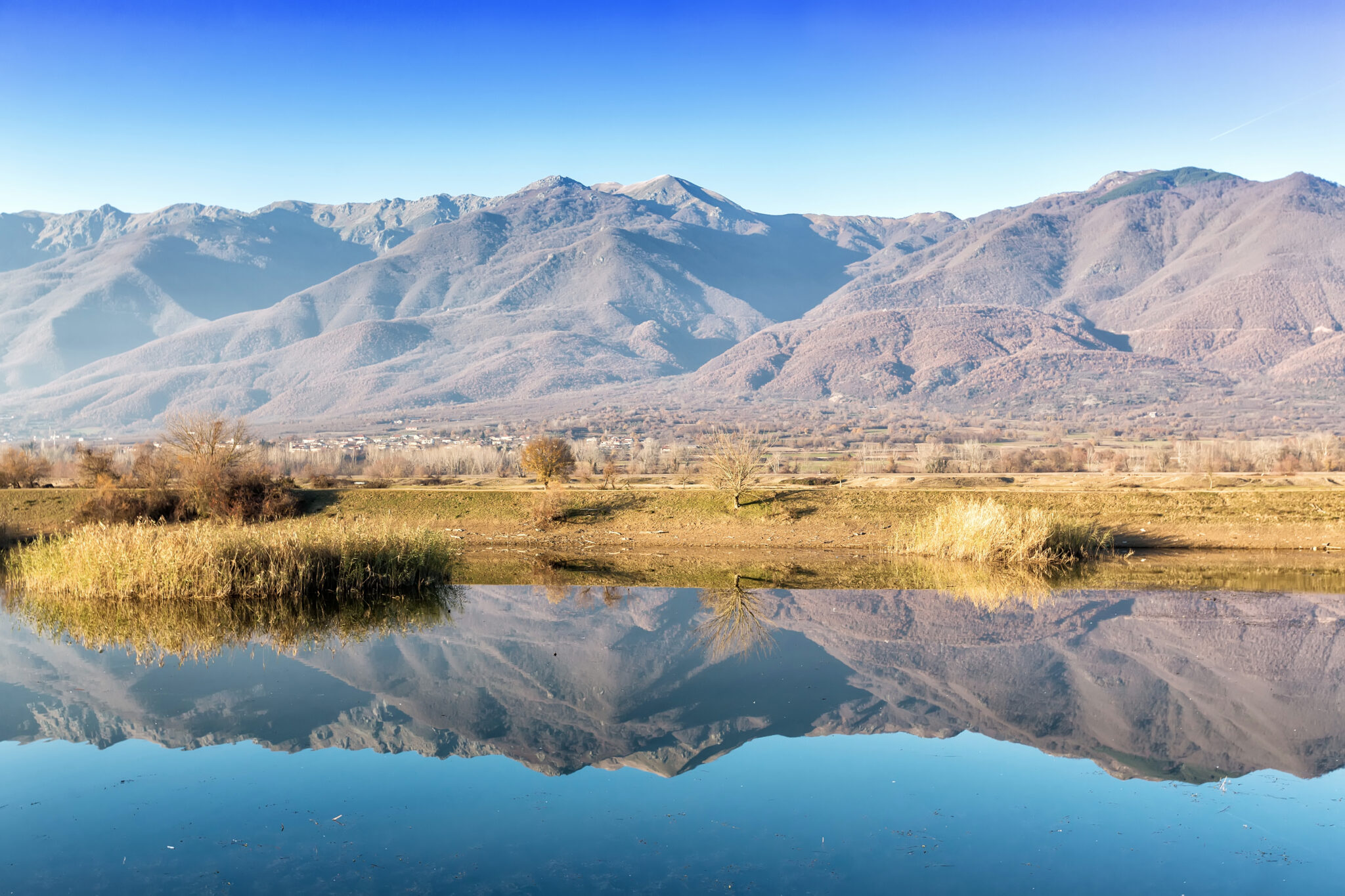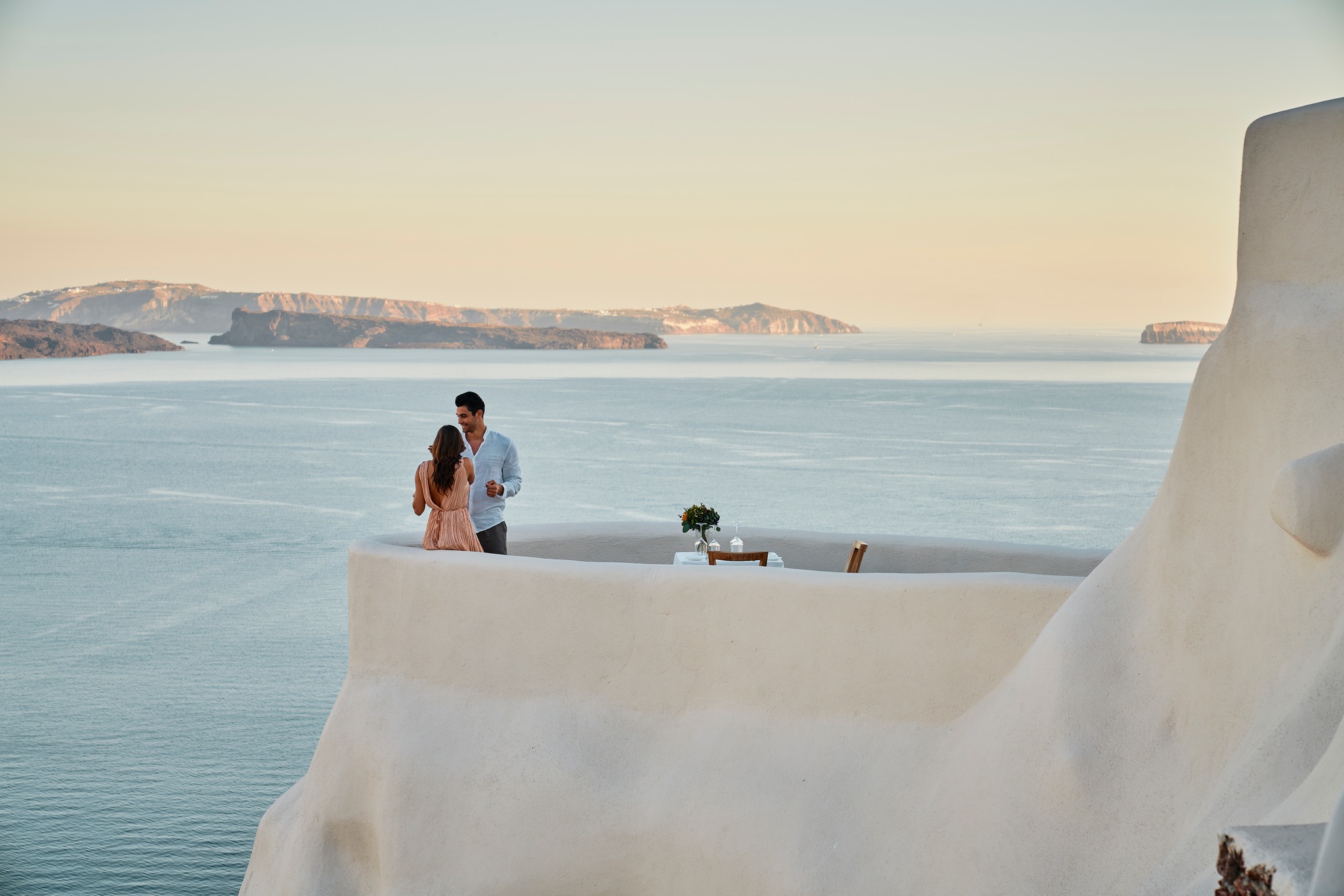The Cyclades are world-famous for their amazing beaches and seaside fishing villages, the vibrant summer nightlife and the quaint windmills overlooking the sea.
There is, however, one Cycladic Island that has all of these, plus one more; namely, mountain villages with picturesque houses and alleys, with cultural attractions and local producers who make excellent cheese and meat products. This island is none other than Naxos, and perhaps the most beautiful of its mountain villages is Apeiranthos.
Dotted with beautiful stone-built houses, the village has its own traditions and its own products. Many prominent figures of Greece were born here, moreover. “T’ Aperathou”, as the locals call it, is the birthplace of Manolis Glezos (Greek left-wing politician, hero of the National Resistance, journalist and writer), who served as president of the community in the 1980s. It is also the birthplace of Petros Protopapadakis, former Prime Minister of Greece and one of the six executed in the Trial of the Six (The term Trial of the Six has been recorded in Greek history as the trial before a military tribunal in which those considered responsible for the Asia Minor Catastrophe were brought to justice), shortly after the Asia Minor Catastrophe.
Apeiranthos was also the first village of Naxos to feel the wrath of the storm “Elpis”. Located at 600 meters altitude, snow is not uncommon in the village, but the density of the snowfall that started on Sunday afternoon, January 23, was impressive.
We visited the “marble village”, located at the foot of Mount Fanari, nestled between two valleys full of vineyards and orchards, on a wintry but not snowy January day. The most impressive thing about Apeiranthos is that it retains its architectural character, which dates back to the Venetian era, almost intact. Besides, the entire village has been classified as a traditional settlement. The architectural jewel of Apeiranthos is probably the Zevgolis tower, which is built at the entrance of the village, and, thus, impossible to miss it. It is an impressive 17th century structure, built on a rock. But that’s not the only thing impressive, as marble cobbled streets with arches, beautiful stone houses and towers adorn the entire village.
A village with its own idiom
The local culture is clearly different from that of any other village in the Cyclades, including the villages of Naxos. One theory suggests that this has to do with the Cretan origins of its inhabitants. Even if this theory is not 100% confirmed, what is certain is that the inhabitants of Apeiranthos hold several customs and traditions similar to those of Crete.
At their feasts there are almost always Cretan lyres and lutes. Apeiranthos is also known as “the village that writes poetry”. Many of the approximately 550 inhabitants have a talent for improvised poetry and Apeiranthos has its own mantinades (the most common form of folk song in Crete). Here they are called “kotsakia”. It is also common in the local idiom for the consonant “r” to be replaced by “l”, which is also the case in the Cretan idiom.
The wefts
In 1987, when he was president of the community, Manolis Glezos took the initiative for the creation of the Traditional Art Cooperative of the Women of Apeiranthos. After 25 years, the cooperative still exists and its exhibition space is located at the entrance of the village. There visitors can admire wonderful handmade woven textiles, made on the loom. An indication of how much the art of handloom weaving is rooted in the culture of the village is that there is a local word for the loom here, which is “krevataria”.
An island full of flavours
Apart from fresh fish, Naxos also boasts the largest production of dairy and meat products in the Cyclades. So, especially in winter months, our gastronomic proposals are in line with this fact. Naxos gruyere, a PDO product, local meats, Naxos potatoes with their special taste, “patoudo”, i.e. goat or lamb stuffed with greens and rice, pies and thyme honey; gourmets are sure to find everything they might be looking for.
One village, five museums
Visitors will be impressed by the fact that in such a small place there are so many great cultural attractions. In Apeiranthos there are five museums: Archaeological, Natural History, Geological, Folklore and the Museum of Children’s Culture. The village also boasts the largest library in the Cyclades, which is dedicated to Nikos Glezos, brother of Manolis Glezos, who was executed by the Nazis in 1944.
Emery and Moutsouna
Apart from edibles, emery was for decades the most famous product from Naxos and especially from Apeiranthos – a rock that was widely used for the construction of millstones in windmills, while powdered and mixed with oil and water was used for polishing metals and stones. In the wider area of eastern Naxos there were once dozens of mines. The emery extracted from these mines was transported to the port of Apeiranthos, the picturesque Moutsouna, 9 km from Apeiranthos. There was the terminal of the overhead railway line for the transport of the emery, a pioneering technical project for its time. Its remains are still visible today. The emery was transported from the train carriages to ships and from there all over Greece. Today in Moutsouna there are rooms to let and excellent fish taverns.
Read also:



